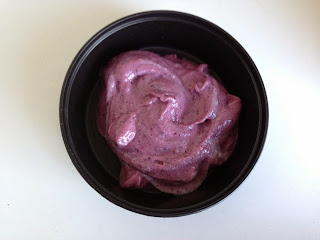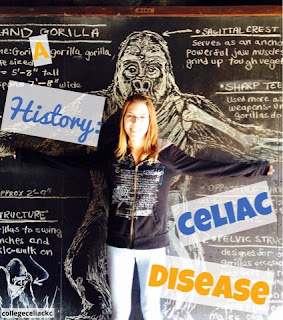Once Upon a Time: A History of Celiac Disease
As a child, my dad was the king of story telling. Nearly every night, he would tuck my little sister and I into bed and transport us to exotic worlds filled with castles, princesses and even talking dolphins. Today, though, I want to share a different kind of bedtime story.
Whether you have celiac disease, gluten intolerance or a gluten allergy or know children who do, here's the story of celiac disease from the second century AD to now!
Once upon a time, in a country far away, a man named Artaeus of Cappadocia noticed a mysterious illness striking the people of Greece. Those with it would experience painful tummy aches and Artaeus eventually dubbed them "celiacs." (Ever wonder why celiac disease is spelled "coeliac" in other places around the world? It's because both names were translated from Greek!)
As time passes, celiacs appeared all over the globe. By 1888, though, a doctor named Samuel Gee had a lightbulb moment. He thought the tummy aches were tied to what people ate! Now, we know today that celiacs should follow a gluten free diet, but people didn't know that back then. Instead, doctors like Sidney Hass in 1924 suggested celiacs only eat bananas, sometimes with milk. That sounds a little bananas, but it's true!
 |
| Maybe my banana ice cream kick wasn't so crazy! |
Now, maybe you've heard the story of the sailor chasing after a sneaky whale known as Moby Dick. But Willem Karel Dicke was after a different beast: the exact cause of celiac disease. In 1952, he found it! A few years earlier, Dicke noticed that kids seemed to do better during the war when grains like wheat were in short supply. When the soldiers - and the wheat - came back home, so did their health problems! He later identified gluten as the troublemaker and celiacs now were told to follow a gluten free diet.
Wondering where the girls are in celiac history? Enter Margot Shiner from 1956! She came up with the idea of using a "biopsy" - when doctors use a camera to look in your intestines and take a sample - to diagnose celiac disease.
Now, we know that our DNA and genes are what make us unique. In 1989, though, Ludvig Sollid and his research group discovered the genes that often cause celiac disease: two types of the molecule, histocompatability leukocyte antigen or (HLA). Try saying that five times fast!
Remember getting blood drawn at the doctor's office? In fact, doctors weren't able to look in your blood for signs of celiac disease until 1997. That's when Detlef Schuppan discovered that autoantibodies in people with celiac disease attack tissue's transglutaminase (an enzyme released when gluten passes through the intestines). No wonder gluten hurts!
Despite the work of these awesome researchers, there was a lot about celiac disease we still didn't known by 2000. Alessio Fasano helped fill in the blanks. He found zonulin, a molecule believed to increase the odds of celiac disease.
You've probably become a gluten free ninja since your diagnosis. In 2010, though, several clinical trials began. Basically, this means researchers are seeing what non-dietary changes could help people with celiac disease. Who knows what celiacs will be able to do - and eat - in the future?
And celiac disease history is still being made now with you, me and other researchers! The fact is, if you ever feel alone, know that hundreds of thousands of celiacs are out there - today and in the past. So much progress has been made since celiac disease first appeared in history.
And, because of the hard work of scientists, doctors, parents, friends and celiacs like you, it's now possible to live "happily ever after" with celiac disease. But I won't write "The End" yet because, really, we, and the celiacs before us, are only the beginning.
Did anything in celiac disease history surprise you? Any other thoughts? Comment below!





Comments
Post a Comment